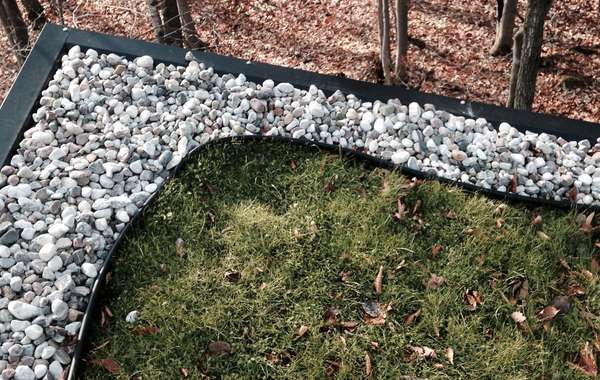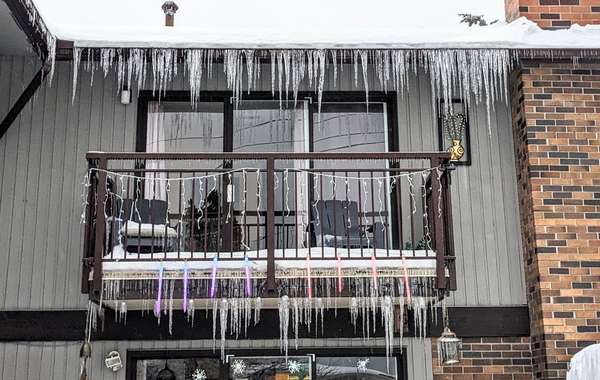Asphalt shingles are the most common and cheapest roof covering, at least until it's time to replace them. Metal roofing can last a lifetime or longer, so we feel that the cost levels out in the long run. Here is a comprehensive comparison of the advantages and disadvantages of metal roofing v asphalt shingles for building a new roof or renovating an old roof along with our conclusions as to which option between asphalt shingles and metal roofing is the best for sustainable or Green homes.
The true cost of asphalt shingles:
- Asphalt shingles are the cheapest option for both installation and materials for a one-time install, in every sense of the word.
- The average cost of asphalt shingles can range from $100 to $200 per square foot installed.
- Due to their short lifespan, you can expect to replace asphalt roofing shingles in as little as 12-15 years in a worst-case scenario of tree cover, full sun, snowfall and sub-zero temeratures, excess cleaning, too little cleaning. Best case you may see 30 years but that’s not the norm. This is an important variable to consider when evaluating cost.
More on choosing the best asphalt shingles.
The real cost of metal roofing:
- Metal roofs can cost more upfront, and range between $300 and $700 per square foot depending on the profile and material (steel, aluminum, copper, etc.).
- The initial installation cost is higher, but the longer lifespan means that over the life of a well-built home they can end up being the cheaper option.
- In our experience metal roofs are easier to maintain, and so cost less per year of ownership - this is especially true of roofs that have any trees nearby. Falling pine needles, leaves and twigs will come off the roof with more velocity and valleys remain clearer than with asphalt shingle covered roofs.
Durability and Lifespan: metal roofs v asphalt roof tiles
Asphalt Shingles:
- Asphalt shingles will have a stated lifespan of between 15 and 30 years, which depends on the quality of the shingles purchased, quality of installation, and local climate conditions.
- Shingles are susceptible to damage from high winds, extreme temperatures and hail, leading to potential repairs or replacements.
- Asphalt is also prone to granulate loss which can affect its weather resistance over time along with polluting runoff water and blocking gutters and drains.
- Asphalt roofing shingles often have complicated warranty clauses, meaning that 30 year warranty will only really operate in the first couple of years and then is reduced over time due to a sliding scale. We're tempted to see this as a ploy to perpetuate using asphalt shingles again as the client thinks they're getting a reduction in cost against their new roof.
- Asphalt by nature is a type of modified bitumen and so black in color. The surface of asphalt shingles is colored and they add mineral powders and fine gravel in an attempt to keep them cooler and prevent premature aging, but by nature most asphalt shingle roofs will be hotter than a well specified metal roof.
Metal Roofing:
- Metal roofs can last 50 years or longer with minimal maintenance, longer is the word to hang onto here. In fact, getting more than 50 years from metal roofing is common.
- Metal roofing is highly durable and resistant to high winds, more resistant to damage from hail and snow, and extreme weather.
- Unlike asphalt shingles, a metal roof will not significantly deteriorate from exposure to UV rays or extreme temperatures. and while unpainted metal can get up to 145 degrees in the summer, black asphalt shingles can get up to 168 degrees.

Roof Aesthetics and Design: Asphalt shingles v metal roofing
Asphalt Shingles:
- Asphalt shingles are available in a wide variety of colors and styles, including traditional 3-tab shingles or more textured architectural shingles.
- They are generally suitable for most home styles but often don’t ‘fit’ with more modern upscale designs.
Metal Roofing:
- Metal roofs come in a wide range of materials, colors, and finishes. Lower-priced profiles will be top-screwed leaving the fasteners visible, or more expensive profiles exist there the overlap from one sheet covers the screws from the last.
- Metal roofing offers a more contemporary and sleeker look, so it has become a popular choice for modern or upscale homes, though it may not suit traditional or historical styles.
- There are profiles of metal roofing specifically designed for lower pitched roofs where shingles cannot be used without risk of water backing up.
Roof Maintenance: Asphalt roofing v metal
Asphalt Shingles:
- Asphalt shingles require regular maintenance, especially after severe weather events. This includes checking for cracks, granule loss, and shingle warping.
- They may need to be repaired or replaced more frequently, as their lifespan is shorter than metal roofs.
- A build up of growth such as moss can occur from debris from trees, and so particularly with lower pitched roofs where debris is more likely to not wash or blow off, another maintenance measure to remember is sweeping the roof.
Metal Roofing:
- Metal roofs require very little maintenance. They are resistant to algae, moss, and mold growth, and the occasional inspection for loose panels or damage is usually enough.
- Their durability means fewer repairs and replacements over the long term.
- For top-screwed metal roofing, it can be a wise move to replace the screws after 25 years or so as the gaskets can deteriorate over time.

The environmental impact of roofs
Asphalt Shingles:
- Asphalt shingles are the most environmentally damaging roofing material. They are made from petroleum products, there is very little recycling of asphalt shingles, and they almost always end up in landfills.
- Some manufacturers offer shingles with recycled content, and on occasion they end up repurposed in road construction.
Metal Roofing:
- Metal roofing is a more environmentally friendly choice than shingles as it is often made from recycled materials and is certainly 100% recyclable at the end of its life. Old metal roofing can often be repurposed as for sheds or barns, and it is easy to find someone on websites to buy and sell used building materials.
- Metal roofing is lighter than asphalt which can reduce the load on the structure and the amount of materials needed during construction.
Where to place screws on a metal roof:
Note - The weak point of a metal roof is of course exposed screws.
Profiles of metal roofing that leave the screws exposed poses the question of whether to screw from the flat surface or the crest. Manufacturers offer conflicting opinions on this, and both make a good point.
Some say to place screws on the flat surface and never the high point for a more solid attachement into the substrate below, and that makes sense. Some say to put them on the crest of the metal since water flows downward, so there is less force of water on the gaskets, and less chance of debris catching on screws. That also makes sense.
Having installed metal roofing with screws in both locations (like the installer below that apparently couldn't decide and consequently did both), I can see the value in each method. I can also see the criticisms of each method. So really neither is wrong if a roofing installer tells you their preference, just do it with care.
When installing screws on the crest of the raised portion, be sure not to drive screws too far and bend the metal as it will affect the seal. And when installing on the flat portion, be sure the screws are very straight for a tight seal.

Conclusion: Which is better, asphalt shingles or metal roofing?
The choice between asphalt shingles and metal roofing depends on your priorities. Here at Ecohome we always advocate for metal for all the reasons listed above, but we understand there are often budgetary restraints that make choosing the more expensive roof covering difficult.
- Asphalt shingles may be the only option for homeowners on a budget, or those looking for a traditional look. For such cases we would at least encourage choosing a more durable shingle with as long a lifespan as possible but don't believe the hype about a long warranty, we've never seen one that covered fully for the headline term.
- Metal roofing is the better choice for those looking for long-term durability, energy efficiency, and minimal maintenance, with a higher upfront cost. Homes with a more durable roof will be, and appear, more durable. This can have a positive effect on resale value.
For climates with severe weather conditions metal is the safer option. For homeowners who plan to stay in their homes for decades, metal roofing is always the better value. As far as we are concerned, metal is always the better choice if there is room in your budget, and by paying for metal roofing over a slightly longer period, we're willing to guess that the increase in home value and ease of maintenance will make investing in a metal roof the best option.
Now you know more about choosing the best roof coverings between asphalt shingles and metal roofing. You can find more pages about durable building materials and sustainable construction practices below and in the Ecohome Green Building Guide pages.
Find more about green home construction and discover the benefits of a free Ecohome Network Membership here! |




























Comments (0)
Sign Up to Comment